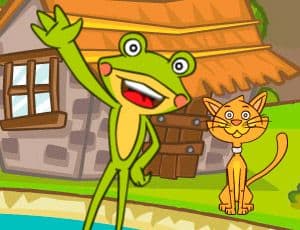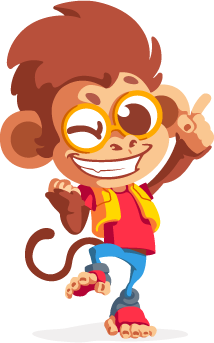Escola Games | Jogos Educativos
https://www.escolagames.com.br
Teacher's support sheet

Successor and Predecessor
Froggy will test your knowledge about predecessor and successor numbers. Have you ever heard about them? Come play with the teacher and its cat and learn everything about it! With each answer you get right, you help the cat not to fall into the river’s cold water. Let’s go?

Teacher's tips
Level of Education: Elementary School
Subject: Mathematics
Theme: Numbers and operations
Age: 6 to 9 years old
This game allows the teacher to work with "predecessor and successor" by stimulating logical thinking and encouraging students to think about strategies for problem-solving. By clicking on "hard" students will face addition and subtraction problems to check their knowledge. [FIM-DICA]
Learner outcomes
To reinforce the "successor and predecessor" concept;
To recognize regularities in numerical sequences related to predecessor and successor;
To identify the predecessor and successor of natural numbers to widen students' knowledge;
To establish relations of "greater than" and "less than" connecting them to addition and subtraction operations;
To develop logical thinking and the notion of order and quantity;
To locate, name, compare, and order natural numbers from 0 to 100;
To solve problem situations involving addition and subtraction.
Teachers' goals
To work with the content playfully;
To reinforce content discussed during the classes;
To present an activity and stimulate students to connect certain concepts of mathematics;
To offer different situations so students use the notions of predecessor and successor in a non-classroom context.
Suggestions of approaches for the teacher
Students will use their knowledge to develop logical thinking, ordering, and quantification, besides giving them notions to analyze problems.
(Approach 1) In pairs, students can compete among the groups. Each round has six opportunities, so each student plays three times. The one who scores more points.
P.S.: To do this activity, certify that both students have the same level to avoid embarrassment.
(Approach 2) You can also organize students with different levels so they can share their ideas, not for competing.
They can also work with the concepts after they play. So they must register the numbers that appear in the game (tips and answers). Then, they should write the predecessor and successor of each of those numbers.
(Approach 3) Make a numeric table with 0 to 100 numbers. With that, ask students to relate to their predecessor and successor. Hand them a signal of "greater than" and "less than" and ask them to organize them according to the numbers. Things can get more challenging if the orders of the numbers are random.
(Approach 4) Use the golden beads material to emphasize the topic.
(Approach 5) Play bingo. They should mark the predecessor or successor of the number the teacher says.
(Approach 6) Dictation of predecessors and successors.
(Approach 7) Make numerical sequences using drawings, shapes, or the < > symbols.
More about the content
Natural numbers allow us to count quantities. Natural numbers are a finite group.
It includes all the positive numbers, starting with zero. They all have a predecessor and a successor, except for the zero. It does not include fractions or negative numbers.
Using playful activities is essential to cognitive development. Some games can help students think about specific mathematics topics. They promote critical thinking that permits their understanding of determined topics. Use the games as complementary material and an ally for students' cognitive and logical thinking development.
